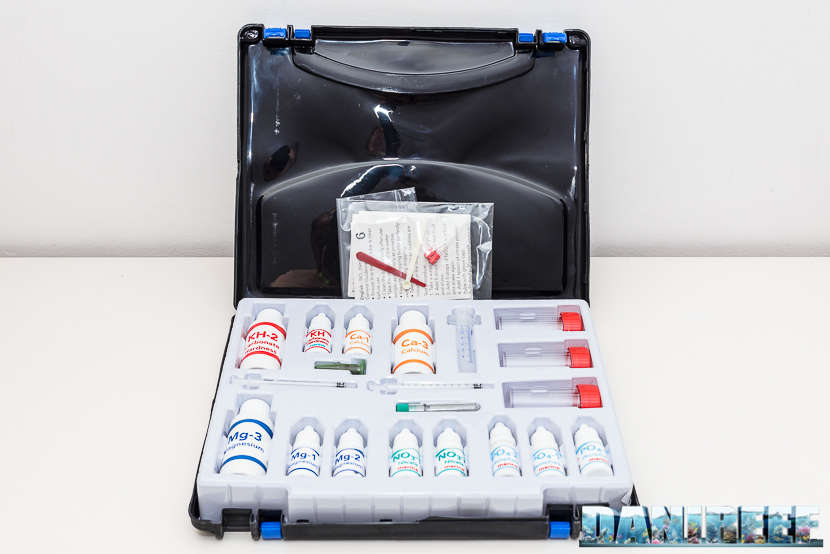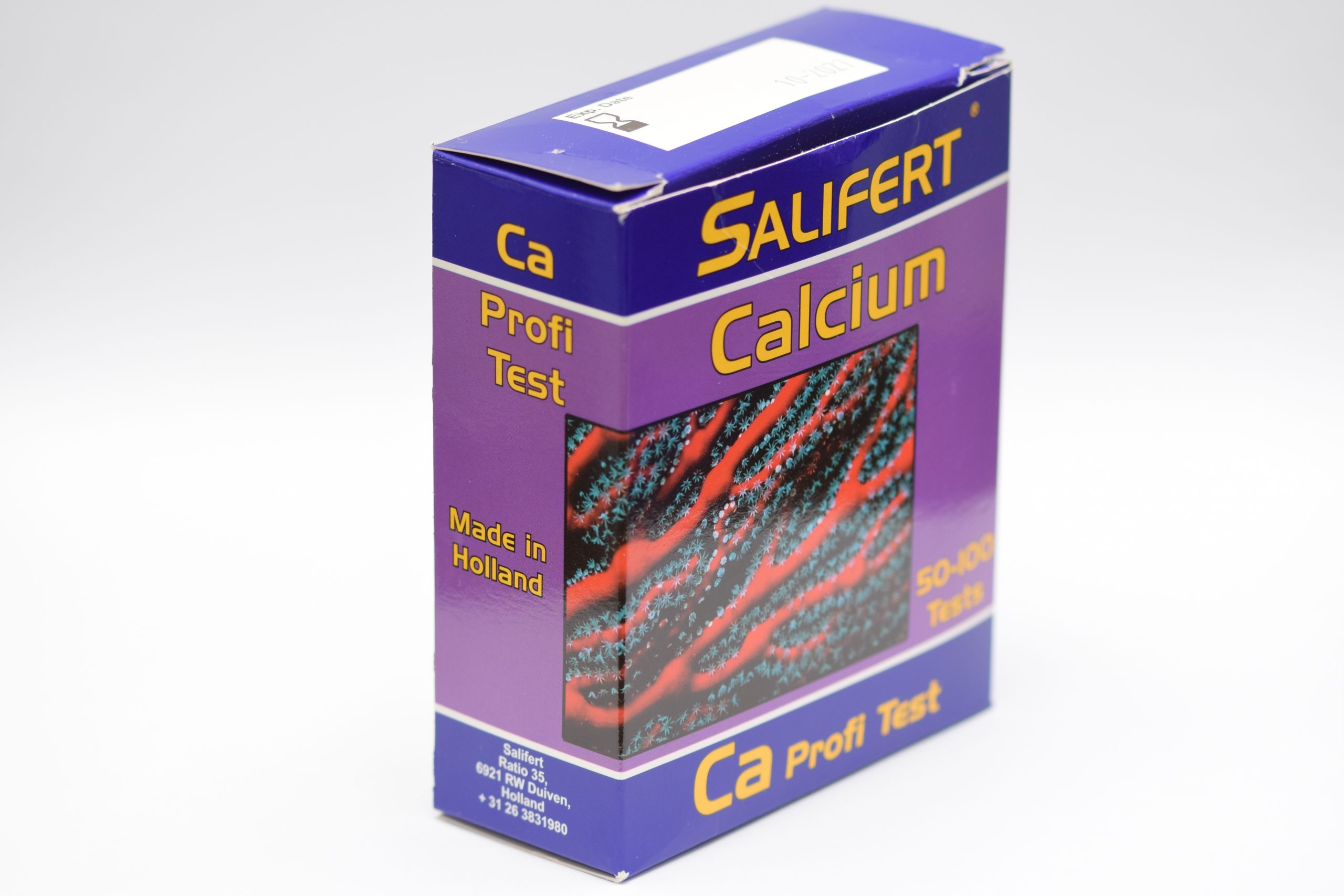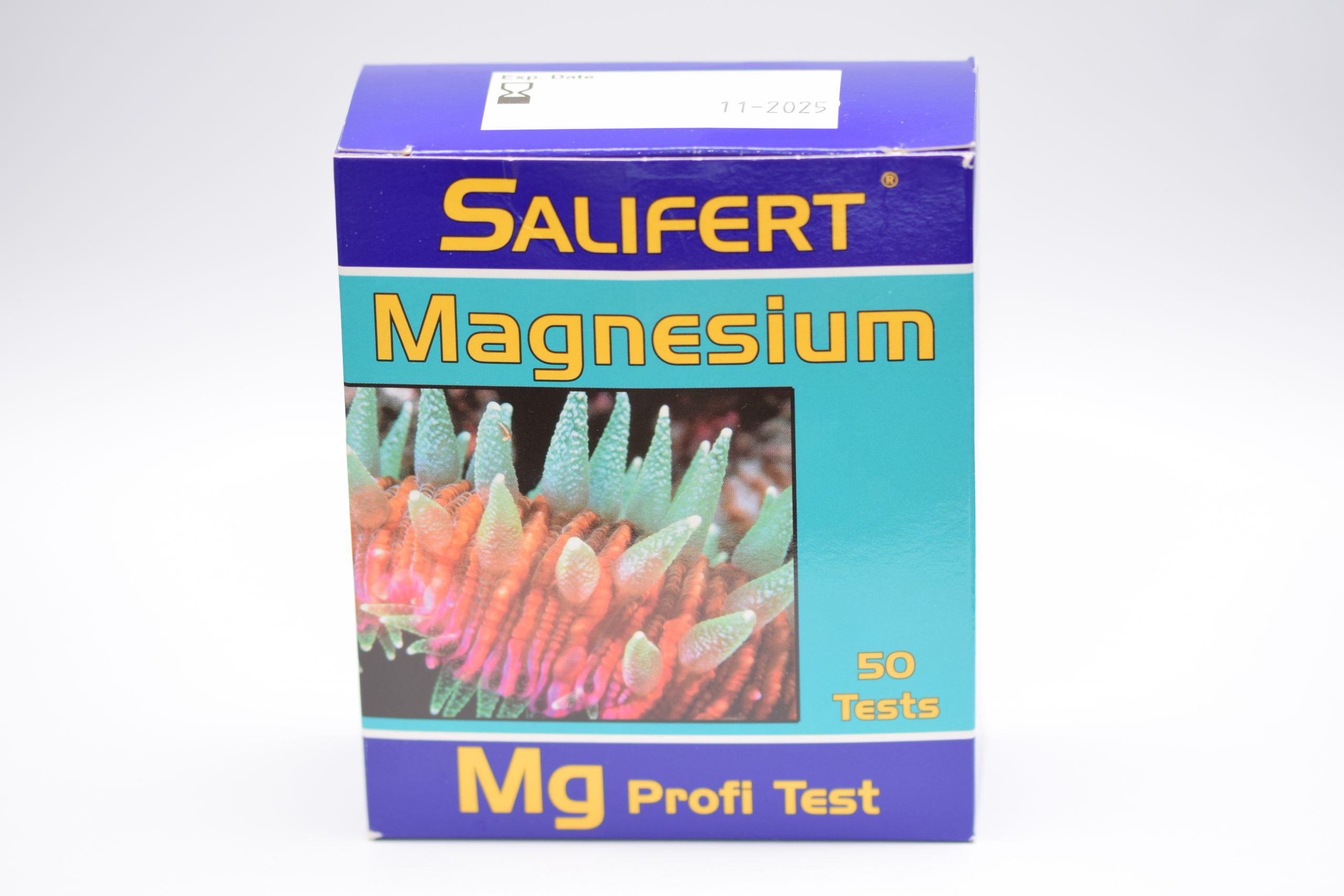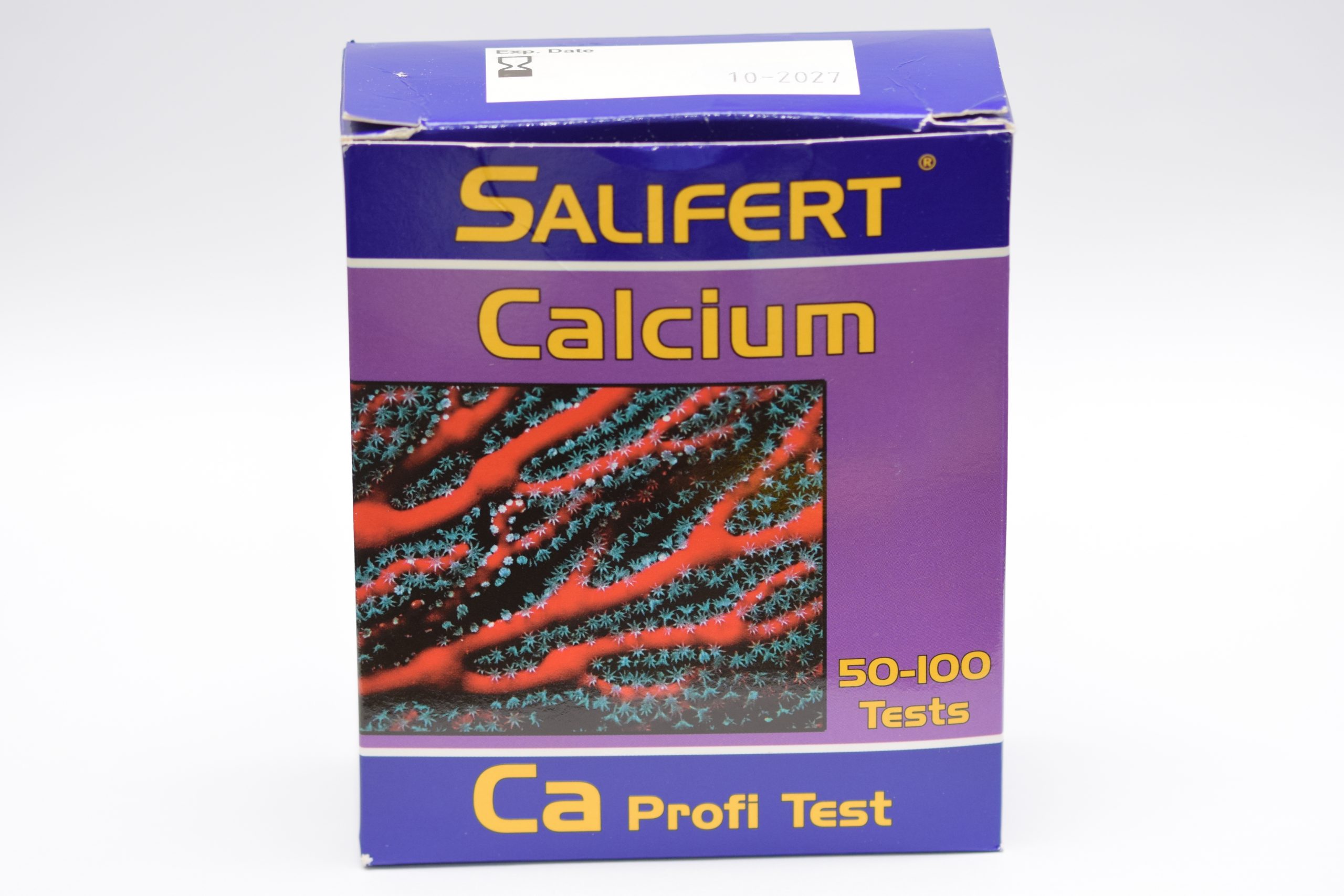Nitrate test
For nitrates, Tropic Marin recommends a level up to 20 mg/l for freshwater aquariums, with 80 mg/l maximum and 100 mg/l considered dangerous. For marine tanks the level should never exceed the 20 mg/l if only fishes are kept, while for corals it should not go above 10 mg/l. We at DaniReef would like to add that for SPS coral colourations the level should be even lower.

The nitrate test would be spoiled by a nitrite concentration higher than 0.05 mg/l. It is good to have both tests, then, to make sure we are reading a reliable value.
To carry out the test we add 10 drops of reagent A to the 5 ml tank water in the cuvette, shake gently then add a spoonful of reagent B, shake gently again then add reagent C. Wait for 3 minutes before comparing the colour with the chromatic scale. The values range between <1, 2, 5, 10, 15, 30, 50, 100, a wide scale which allows us to measure values for freshwater tanks or ponds, but also detailed enough on the lower end for the marine tanks (up to 10 mg/l).
The test was repeated and interpreted by two different individuals, just like for nitrites. At the first trial we read a 2 mg/l value, at the second one of us read a 5 mg/l while the other remained on the 2 mg/l. This test, though, seemed a bit easier to read even if the colours are the same, maybe because being further from the 0 the colours are more vivid and easier to interpret.
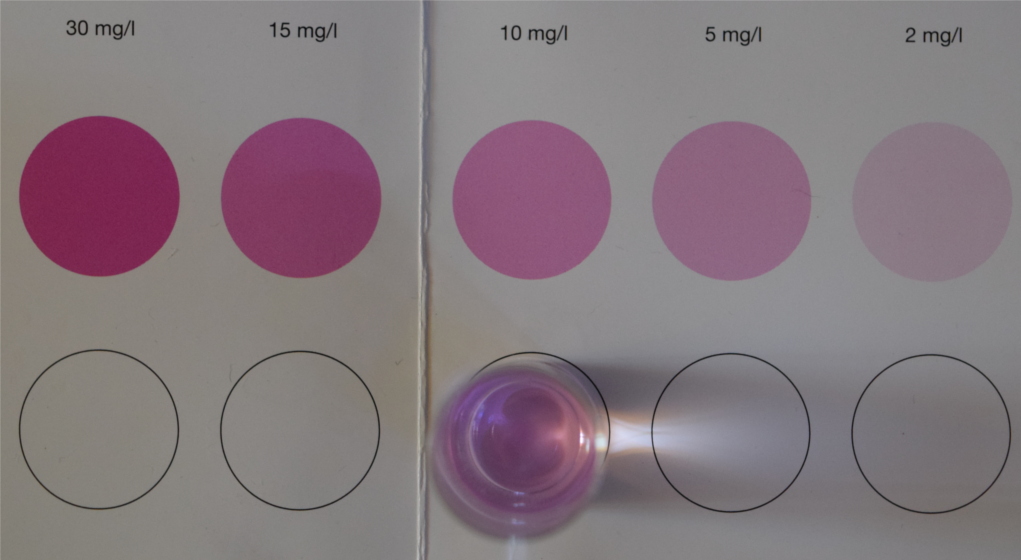
This time we compared the result with another test brand, Salifert, which uses a high sensitivity scale and gave us a result of 5 mg/l. This value is a bit higher than what we found, but not much. We are still sorry for the reference test nature.
Test Kit Duration
There are a few doubts regarding the Tropic Marin Nitrite Nitrate test that we’d like to clarify. Firstly, in the Expert Testset we read a maximum duration of 6 months from the opening, while in the single test it says 12 months. We asked Tropic Marin directly, and they informed us that this test does have a limited duration and it is guaranteed to work for 6 months only. We can still verify the reliability of the test and use it for longer.
Moreover, a specific passage on the Italian instruction booklet is not very comprehensible. As we said, we can verify the test integrity by doing a small test using the reagent D. In this case, by reading the instruction it might sound like we have to use the reagent D in the same cuvette in which we read a result lower than 5 mg/l. But it really means that only after a result lower than 5 mg/l we might want to test the quality of our reagents, and to do so we have to repeat the test with new water and adding 5 drops of reagent D, then the reagents for a normal test. If the value read is equal or more than 30 mg/l, we can consider the previous result as reliable.
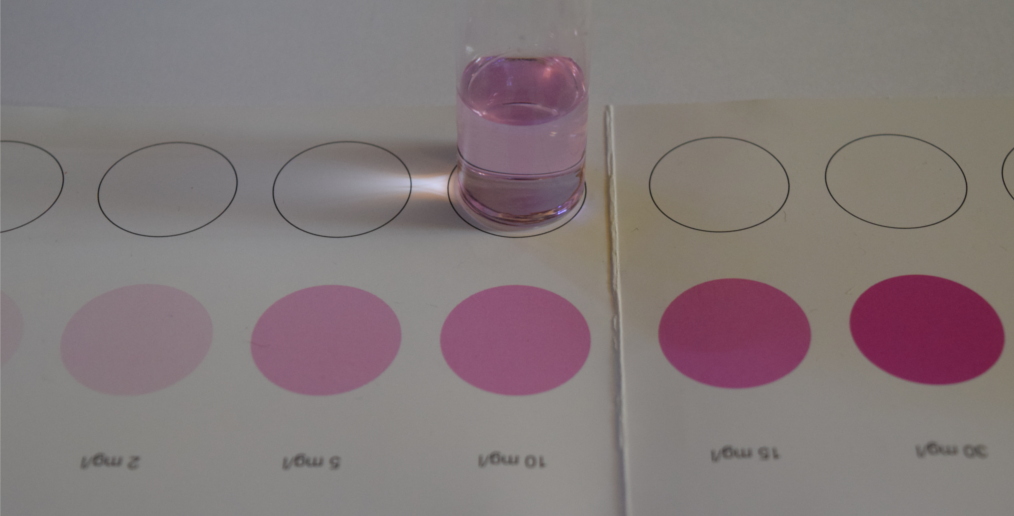
Conclusions
The only issue with the Tropic Marin Nitrite Nitrate test is the chromatic scale interpretation. With a good light and exercise (also by placing the cuvette near the colour sheet) the test results should become unambiguous. The test repeatability was optimal. It was a shame not having the possibility to do a lab test to compare results.
The test is easy to carry out and during the 3 minutes wait for one we can start the other (and reading the scale of the first during the second 3 minutes wait), this allows us to optimize our time.
In case you need it here is the multilingual instruction leaflet.
PRO
![]() Price
Price
![]() Easy to carry out
Easy to carry out
![]() Optimal repeatability
Optimal repeatability
![]() Possibility to verify test reagent state
Possibility to verify test reagent state
CONTRO
![]() Difficult to read chromatic scale
Difficult to read chromatic scale
| Manufacture Quality | |
| Quality | |
| Quality/Price Relationship |



